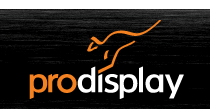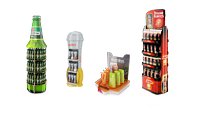Pro Display
News - Get inside a customer's mind at the moment your message appears.
A Pitch Needs to Occur in the Right Place and Time and Leave a Good Feeling.
Marketers are good at knowing their customers and capturing their attention, but engaging them remains a challenge. We know, for example, that 27-year-old, red-wine-drinking, book-club-member Vanessa is our target -- but how do we sway her? That requires us to ask more questions. It's not just where does she go, but where does she go when she is happy? It's not just what is she doing, but what is she thinking and feeling when she sees my brand message? How long will she be there? Is this an experience I want to brand with my presence?
To deliver the right branded consumer experience in the right venue, a two-pronged approach can be very effective. First, identify environments where you can reach the right target – and, just as important, predict the consumer's mindset at the very moment he or she is engaging with your message. Second, deliver highly relevant messages at critical touch-points where you know the consumer will spend more time.
Media messages resonate when they are in harmony with the environment and even better when the consumer has the time to absorb the message. It seems simple to do; but marketers can miss the opportunity by not customizing the message to match the consumer's mindset, or by sending the right message in the wrong location.
A message delivered at the point-of-sale is powerful because we know exactly what the consumer is doing the moment she sees the message. If, for example, the consumer is at Kroger, standing in the condiment aisle staring at a sea of mustard brands, then the pitch to try a new mustard can come across as a call to action. The same pitch on a highway billboard two miles from Kroger is reaching a consumer who might be driving to soccer practice or to a funeral, in no frame of mind to be thinking about mustard.
Tailoring the message to resonate with what the consumer is naturally thinking and feeling is key. But you also want to ensure that the message is associated with a positive experience for the consumer. For example, you want to reach new moms? Buy a poster board in an obstetrician/gynecologist's office, right? But understand that many visits to the doctor's office are not to hear good news. Advertising on bins used for scanning by airport security is a way to reach frequent travelers, but security check-in is stressful and one of the least pleasant parts of the traveling experience.
People will avoid a food or beverage for the rest of their lives if they become ill shortly after consuming it, even if that food was not the culprit. We all know people who had a bad experience with coleslaw who will "never touch the stuff" again. Linking your brand to a negative experience can have the same lasting effect.
Once you've got the right consumer in the right environment, don't squander that opportunity by presenting material that's irrelevant. If you are putting an ad on an airplane tray table, when you know that passengers will be fastened to their seats for the next three hours, don't use your print ad copy. Do what Tylenol did and offer stretching exercises to do while sitting on an airplane. If you are placing media at a winter sports resort, don't reuse your out-of-home billboard copy, do what FirstBank did to promote online banking and tailor the message, "Bank in your ski mask without getting arrested."
By predicting where your customers will be and how they will behave when they encounter your message, you can create an experience with the brand that will leave them feeling good about it and even compelled to try it.
[Source: Sherry Orel, adage.com]













